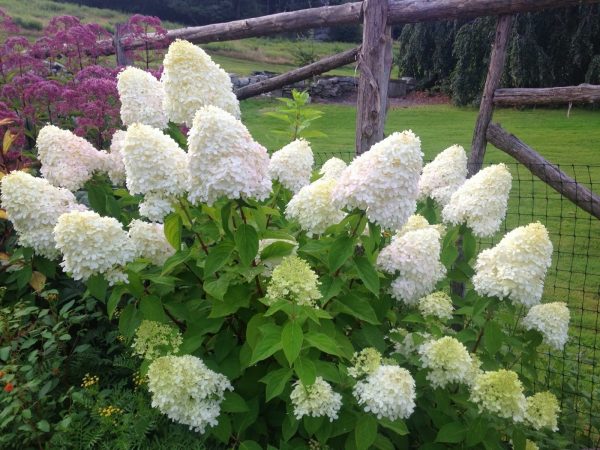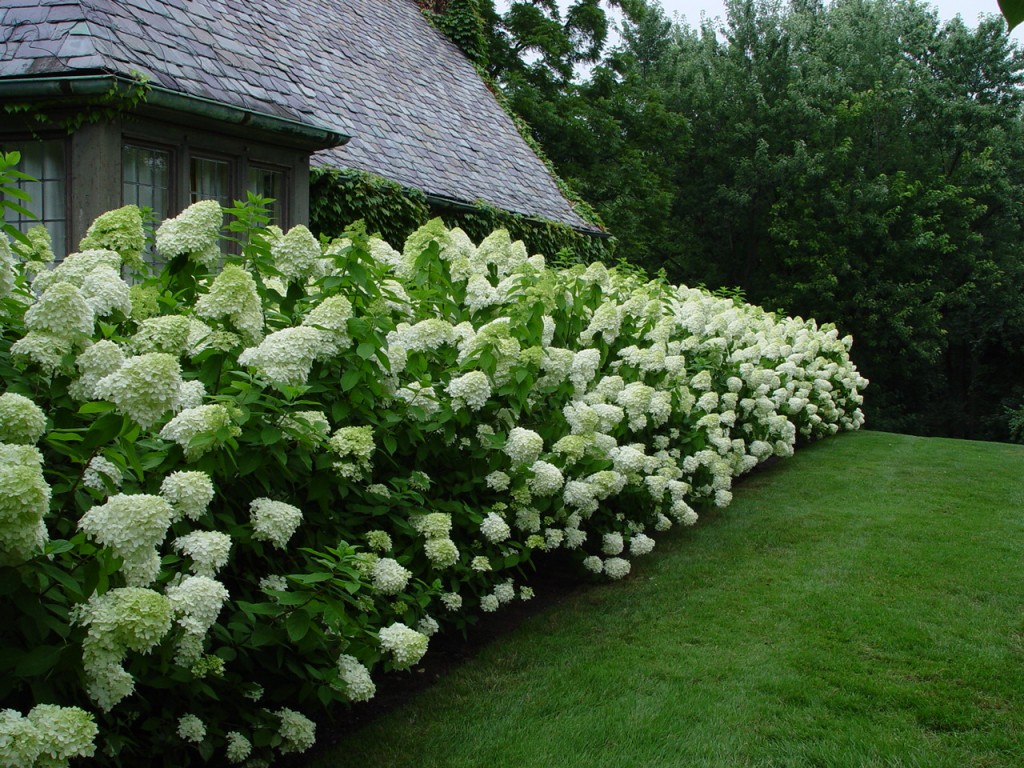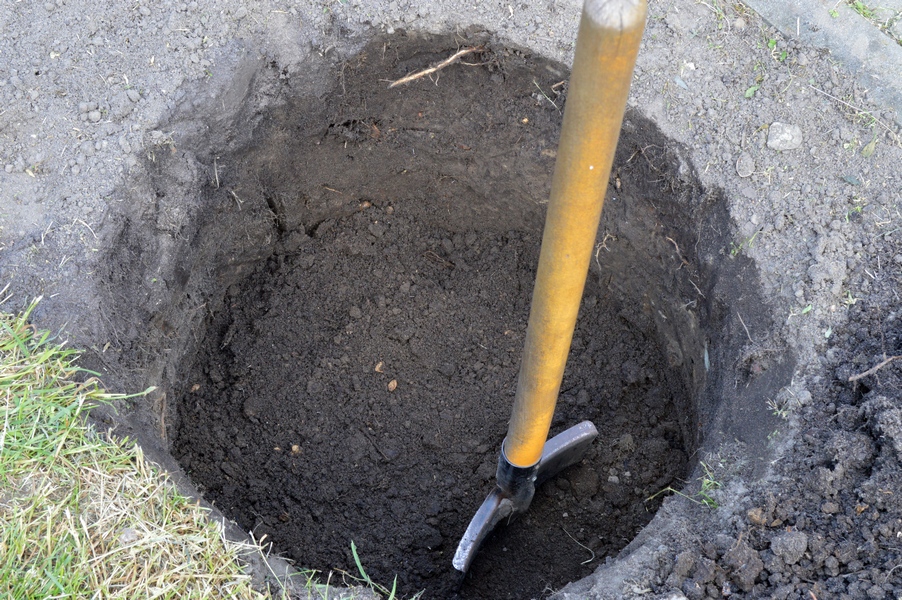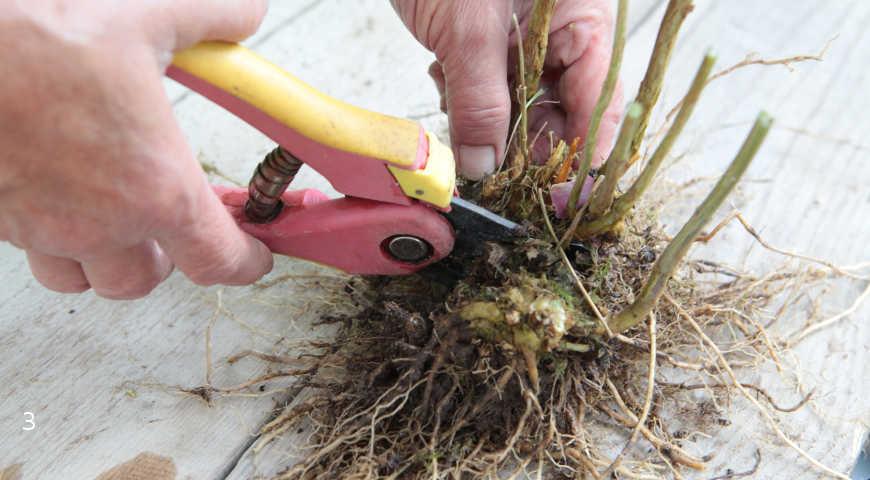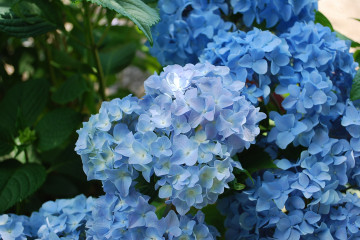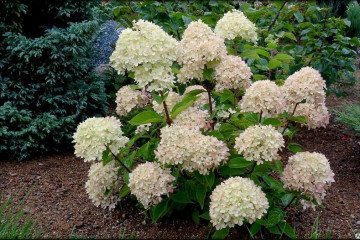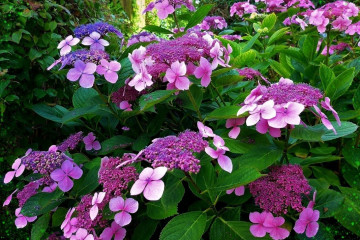Hydrangea Limelight (Limelight) paniculate garden
Content:
Hydrangeas are the favorites of those who wish to decorate their sites with long-flowering shrubs. Depending on the species, there are many shades and forms of their flowering. All of them delight with their beauty for an equally long time: from the end of June to September. Almost all summer, the bush is decorated with exuberant color.
Hydrangea Limelight (in Latin Hydrangea Paniculata Limelight) is the result of the work of breeders seeking to create a variety that can independently hold huge corollas of flowers without bending or breaking under their weight.
The origin and appearance of the plant
The history of the origin of hydrangeas dates back to Japan. The guests of the country who fell in love with its flowering began to gradually spread the shoots all over the world.
Dutch breeders became interested in the properties of the shrub and began to develop new varieties that differ in the color of the buds, the shape of the inflorescences, and frost resistance.
Hydrangea panicle Limelight is precisely a deciduous variety, for which summer residents of the North-West, Trans-Urals, the Komi Republic and many other regions love it with short and moody summers and snowy winters. It is a shrub, each tree-like stem of which is densely covered with foliage. With proper care, the height of the shrub reaches two, sometimes three meters. Every year, young shoots add 20 cm.
The foliage of the hydrangea is emerald green, has a dense structure and longitudinal distinct veins. The base of the leaf is wide, narrowed towards the end, the edges are bordered by serrations. The maximum possible length is 12 cm.
The root system of the plant is well developed both in depth and in width. In an adult plant, it deepens on average by half a meter, the horizontal diameter of the rhizome sometimes reaches 1 meter.
Limelight hydrangea inflorescences are similar in description to lilac inflorescences. In botany, such a structure of a complex brush is called a panicle. That is why this type of shrub is called paniculate - for the shape that the inflorescence takes, resembling a pyramid or cone.
Each panicle consists of many four-leafed flowers, colored in tones of unripe lemon or lime. Hydrangea blooms violently under favorable conditions - in the summer months there is not a single shoot left without a panicle. Closer to autumn, the flowers are transformed into pink tones.
Use in landscape design
Hydrangea limelight is often used when planning a zone of green spaces, both on their own personal plots and at government agencies. The most popular way to plant a charming shrub is along the fence between adjacent summer cottages. This is due to the fact that the building regulations prohibit a continuous fence on the borders of neighboring estates. But since the hydrangea has dense foliage and is not inferior to the fence in height, summer residents and gardeners began to survey the land with it.
Professionals, when thinking about planting plants, also take into account the density of foliage and the size of the inflorescences, which often leads to the following uses of these qualities:
- zoning of the territory, fencing off the resting place with bushes;
- longitudinal frequent plantations along the edge of paths;
- symmetrical landing in front of the entrance group of villages or the gates of private courtyards.
The designers also fell in love with hydrangea because it needs annual pruning, that is, it can be figuratively cut, giving any geometry to the bush. This is especially important when the plant delineates the alleys - by cutting the bushes, you can get a single green array, which will turn into a path of flowers of stunning beauty.
Open ground transplant
Planting panicle hydrangea limelight in open ground is recommended in spring. At this time, the plant awakens from winter sleep, the growth of shoots is activated, the root system is rapidly developing.
What is needed for landing
Hydrangeas need fertile soil. If the plot has its own land - black soil, you do not need to make additional components. But in areas with loamy soils, you will have to add drainage, turf and peat to the bush hole to lighten the clumping substrate and make it suitable for hydrangeas.
ABOUToptimal place
In order for the hydrangea to have a lemon hue during flowering, there should be a little light, since with the active influence of the sun, the petals acquire a snow-white tone.
Step-by-step transplant process
In order for the Limelight hydrangea, after transplantation into open ground, to take root and bloom violently the next year, the following algorithm of actions should be adhered to:
- Prepare a hole, half a meter deep and wide.
- Prepare the plant itself by cutting off the shoots so that each has 2-3 healthy buds.
- Place the seedling in the hole so that the root collar does not go deep under the soil layer.
- Fill the hole with prepared fertile soil or natural chernozem.
- Water the newly planted plant with at least two buckets of room temperature water.
Reproduction
It is not difficult to propagate a hydrangea, there are several methods available, including sowing seeds obtained after seasonal flowering. However, it should be borne in mind that it is better to propagate with seeds a natural variety of a shrub, and not a selection specimen, since the seeds are not able to transfer all the genetic material of the bred variety to a new plant.
This is the method and the longest - after the emergence of seedlings, sprouts can be dived into open ground only after they reach the age of three.
The easiest way to get new Lime Light hydrangea is by dividing the bush. This option is relevant when an adult plant needs a transplant or thinning of densely overgrown areas.
Most often, flower growers resort to the grafting method. This requires cutting off the young side shoots from the plant. For rooting, it is necessary to remove the tip at the appendix, shortening it so that only 3-4 leaves remain on the trunk. It is recommended to put the prepared stalk not just in clean water, but in a solution with stimulants for the development of the root system.
Limelight hydrangea care
Hydrangea cannot be called a capricious plant.It doesn't require a lot of attention, although some aspects are worth keeping in mind.
Watering mode
The shrub is hygrophilous, so in the hot months of summer you need to water it 2 times a week, based on a bucket per bush. In spring and autumn, the volume of water and the number of irrigations are significantly reduced - up to 1 time in 3 weeks.
Top dressing
It is necessary to apply fertilizers suitable for all types of hydrangeas once a month during the period of active growth. Do not neglect the instructions and dosages indicated on the package, as improperly applied substances can burn the roots and destroy the plant.
During flowering
When a plant pleases with its spectacular flowering, it needs to be hilled, loosened up the earth so that oxygen can penetrate into the soil, enriching it.
If it is not possible to water regularly, the area under the bush should be covered with a 10 cm layer of mulch, which will prevent moisture from evaporating quickly.
During the rest period
During the winter sleep period, the hydrangea does not need to be watered or fed. Limelight variety has an average winter hardiness. This means that the plant will endure any frost if it is previously covered with garden material, and the roots are mulched with a thick layer of straw or spruce branches.
Preparing for winter
Before wintering, the bush is examined for damaged shoots, they are cut off. The land around the bush needs to be loosened, the last abundant watering this season should be carried out, after which the soil should be covered and left until spring.
Having paid enough attention to the hydrangea during the first planting on the site, you can enjoy the beauty of its flowering for several years in a row without putting in almost any effort. A beautifully trimmed and wildly blooming Limelight will become a source of pride even for a novice summer resident.

